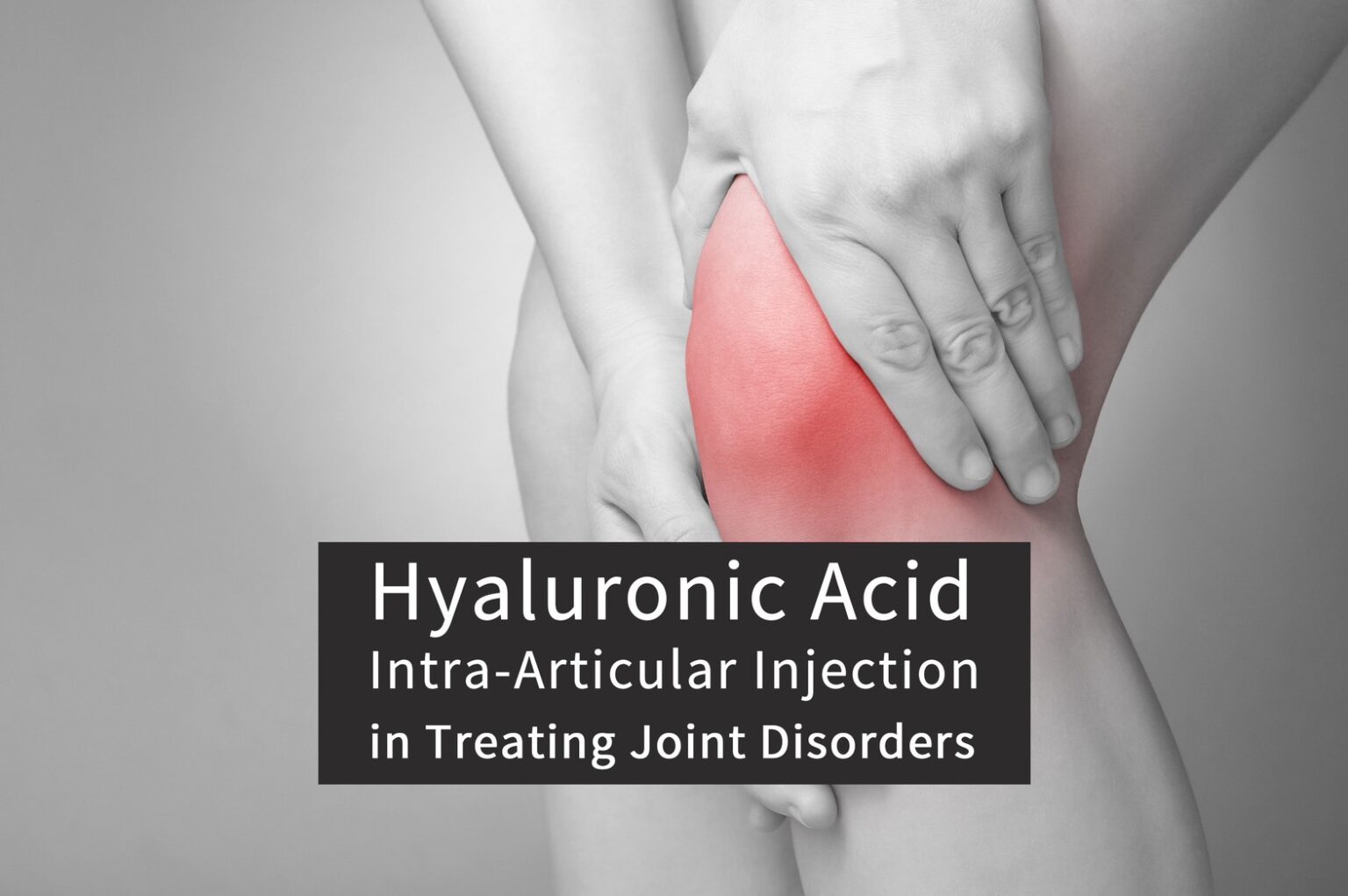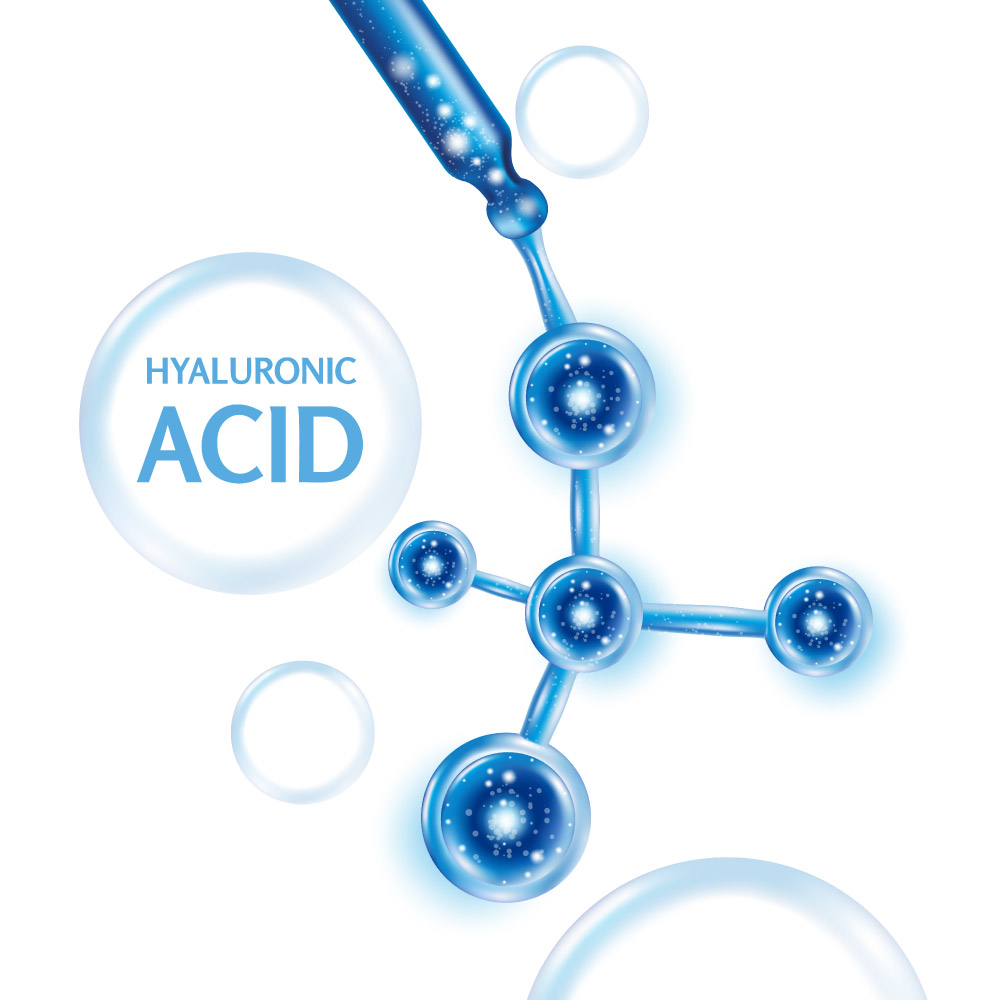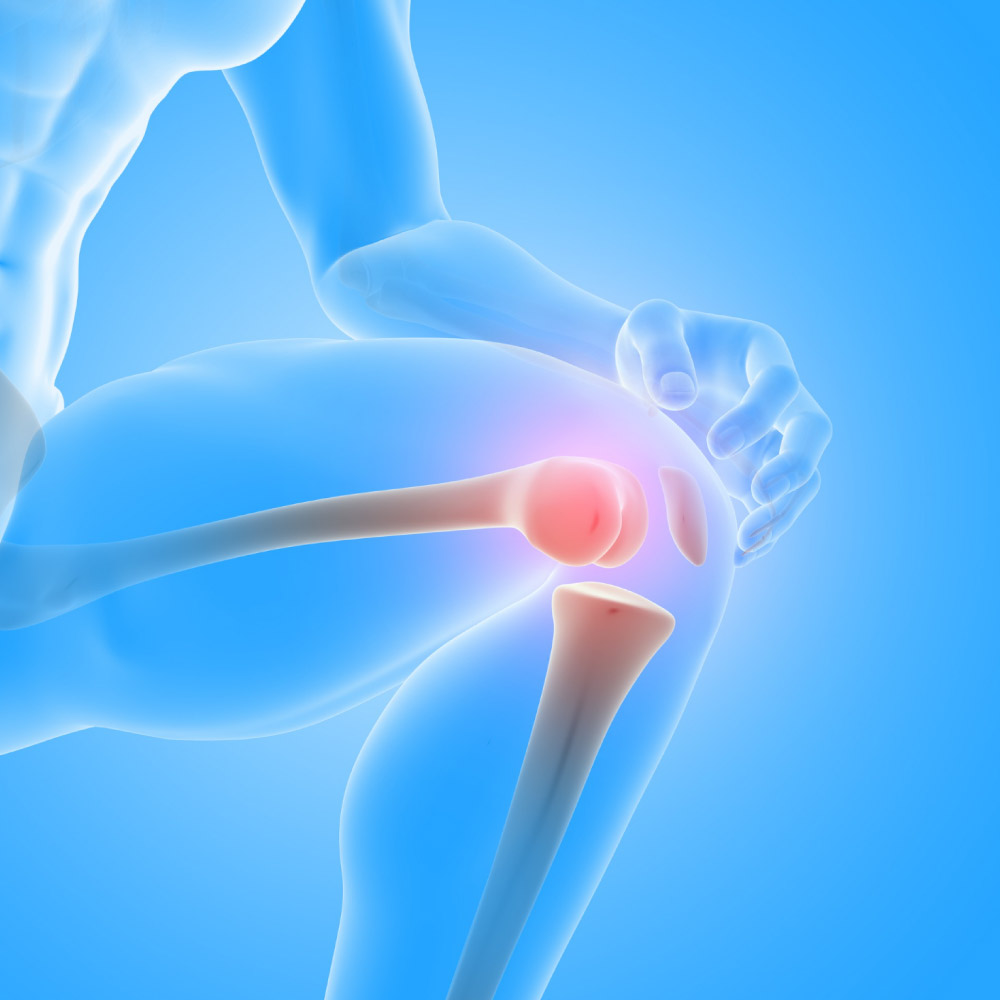La osteoartritis (OA) es la forma más común de artritis, y se caracteriza por dolor y rigidez en las articulaciones, lo que conduce a un deterioro funcional y una disminución en la calidad de vida, con comorbilidad física y/o mental.**
Table of Contents
¿Para qué se utiliza la inyección intraarticular de ácido hialurónico (HA)?
El ácido hialurónico, el componente principal del líquido sinovial, es responsable de las propiedades lubricantes y de absorción de impactos del líquido sinovial. Por lo tanto, la inyección intraarticular de ácido hialurónico es un tratamiento que aborda directamente la causa del dolor al suministrar al líquido sinovial osteoartrítico soluciones de alta elastoviscosidad.
¿Cuál es la diferencia entre las inyecciones intraarticulares de corticosteroides y de ácido hialurónico?
El corticosteroide es un compuesto químico que reduce la inflamación y puede aliviar rápidamente y de manera efectiva el dolor causado por trastornos articulares como la osteoartritis. Sin embargo, cuanto más tiempo se use, mayor es el riesgo de causar efectos secundarios como calcificación intraarticular o periarticular. Por otro lado, la inyección intraarticular de ácido hialurónico puede suplementar el líquido sinovial degenerado para restaurar la lubricación de la articulación, logrando así un alivio del dolor.
| Item | Pain Relief | Joint Lubrication | Shock Absorption | Protects Joint | Side Effect |
|---|---|---|---|---|---|
| Corticosteroid | Very Fast | X | X | X | Articular calcification after long-term use |
| Hyaluronic Acid | Fast | O | O | O | Slightly more expensive |
¿Qué es mejor: la inyección intraarticular de esteroides o de ácido hialurónico?
Los esteroides, también llamados corticosteroides, son medicamentos antiinflamatorios que se utilizan para tratar una variedad de condiciones. La inyección intraarticular de esteroides puede proporcionar un alivio rápido del dolor en pacientes con osteoartritis al disminuir la inflamación, pero la duración exacta del alivio del dolor sigue siendo controvertida. Especialmente, se ha demostrado que los esteroides son citotóxicos para el cartílago articular tanto en humanos como en animales, y se observó una pérdida significativamente mayor del volumen del cartílago en la resonancia magnética de la rodilla en participantes que recibieron una inyección intraarticular de esteroides en comparación con la inyección de solución salina en un ensayo clínico con 140 participantes (ref 1). Afortunadamente, la inyección intraarticular de ácido hialurónico no solo puede suplementar el líquido sinovial degenerado para restaurar la lubricación articular y aliviar el dolor de manera efectiva, sino que también casi no se han reportado efectos secundarios potenciales después del tratamiento en estudios clínicos. Por lo tanto, la inyección intraarticular de ácido hialurónico será la mejor opción para el tratamiento de la osteoartritis en comparación con el uso de esteroides.
Ref 1: Effect of Intra-articular Triamcinolone vs Saline on Knee Cartilage Volume and Pain in Patients With Knee Osteoarthritis. JAMA 2017;317(19):1967-1975.
¿Cuánto tiempo tarda en hacer efecto la inyección intraarticular de ácido hialurónico?
La inyección intraarticular de ácido hialurónico puede ser efectiva para aliviar el dolor inmediatamente después del tratamiento. El principal mecanismo de acción de la inyección intraarticular de ácido hialurónico es actuar como un suplemento del lubricante articular humano, que también está compuesto principalmente por ácido hialurónico. Por lo tanto, el alivio del dolor puede ser efectivo inmediatamente después del tratamiento.
Además de la osteoartritis y la artritis reumatoide, ¿puede la inyección intraarticular de ácido hialurónico usarse para la artritis postraumática?
La artritis postraumática (PTA) se desarrolla después de una lesión o trauma en las articulaciones, y puede causar síntomas agudos como derrame sinovial o dolor severo. Si estos síntomas persisten por más de 2 o 3 meses, puede reconocerse como PTA crónica con una condición inflamatoria persistente. Es bien sabido que CD 44 es un receptor primario de ácido hialurónico con múltiples funciones fisiológicas y patológicas. Las investigaciones científicas han demostrado que el ácido hialurónico puede reducir la inflamación en la artritis experimental (ref 2). Es decir, además de la osteoartritis y la artritis reumatoide, la inyección intraarticular de ácido hialurónico también puede ser efectiva en el tratamiento de la PTA.
Ref 2: High-molecular-weight hyaluronic acid attenuated matrix metalloproteinase-1 and -3 expression via CD44 in tendinopathy. Scientific Reports 2017;7:40840.
¿Cuántas inyecciones de ácido hialurónico se necesitan típicamente para el tratamiento de la osteoartritis de rodilla?
La inyección intraarticular de ácido hialurónico actúa como un suplemento del lubricante articular humano. Por lo tanto, las propiedades viscoelásticas del ácido hialurónico afectarán significativamente el diseño del tratamiento y el resultado en la clínica. Actualmente, existen tres tipos de tratamientos de inyección intraarticular de ácido hialurónico con diferentes dosis de inyección: 5 dosis, 3 dosis y 1 dosis por tratamiento, con un alivio del dolor efectivo durante 6 meses. En general, la principal diferencia radica en la concentración y el peso molecular del ácido hialurónico en los diferentes tratamientos mencionados. En el caso de la inyección intraarticular de 1 dosis, la tecnología de reticulación se utiliza ampliamente para aumentar sustancialmente el peso molecular del ácido hialurónico. Es decir, el ácido hialurónico reticulado puede prolongar la duración de la resorción en el cuerpo humano y, por lo tanto, se puede lograr un alivio del dolor durante 6 meses con solo una dosis de inyección intraarticular.
¿Qué tipo de inyección intraarticular de ácido hialurónico es buena para el tratamiento de la osteoartritis de rodilla?
En Maxigen Biotech Inc., tienen una línea de productos completa que incluye inyecciones intraarticulares de ácido hialurónico en 5 dosis, 3 dosis y 1 dosis. Como se mencionó anteriormente, el rendimiento clave en la propiedad lubricante de la inyección intraarticular es determinado por la concentración y el peso molecular del ácido hialurónico. En el caso de la inyección de 3 dosis, el ArtiAid Plus contiene un 1.5% de ácido hialurónico, siendo el estándar más alto en la misma categoría de productos. Por otro lado, en el caso de la inyección de 1 dosis, el ArtiBest contiene un 2.0% de ácido hialurónico reticulado con un peso molecular superior a 3×10⁷ Daltons, lo que es casi de cinco a diez veces más que el líquido sinovial humano saludable.
Ref 3: Hyaluronan concentration and size distribution in human knee synovial fluid: variations with age and cartilage degeneration. Arthritis Research & Therapy 2016;18:18.
¿Puede la inyección intraarticular de ácido hialurónico usarse para otros tipos de artritis además de la osteoartritis de rodilla?
El ácido hialurónico es un gran glicosaminoglicano que regula procesos fisiológicos en casi todos los tejidos. Por ejemplo, el componente principal del líquido sinovial humano es el ácido hialurónico, que tiene una función lubricante. Además, es bien sabido que el CD 44 es un receptor primario del ácido hialurónico con múltiples funciones fisiológicas y patológicas, como la regulación de la inflamación. Por lo tanto, la inyección intraarticular de ácido hialurónico es efectiva para el tratamiento de diversas formas de artritis, incluyendo la artritis de rodilla, la artritis reumatoide o la artritis postraumática, en función de su contribución en la lubricación y la antiinflamación.
Inyección intraarticular de ácido hialurónico para desgarros del labrum de la cadera
En la práctica clínica, los desgarros del labrum de la cadera pueden causar una posible fuga de líquido sinovial y, posteriormente, afectar su función lubricante inherente. Esto puede causar dolor y rigidez adicionales en la articulación, lo que lleva a un deterioro funcional y a una pérdida en la calidad de vida con comorbilidad física y/o mental. Según el mismo mecanismo de acción en el tratamiento de diversas formas de artritis, la inyección intraarticular de ácido hialurónico también puede servir como un suplemento del lubricante articular humano para restaurar la funcionalidad del líquido sinovial a un estado saludable. En detalle, el ciclo de inyección intraarticular de ácido hialurónico puede seguir las recomendaciones de un médico profesional, de acuerdo con el tratamiento estándar utilizado para las inyecciones en la rodilla.
¿Cuáles son los posibles efectos secundarios de las inyecciones intraarticulares de ácido hialurónico en la cadera?
El ácido hialurónico es una matriz extracelular natural que se distribuye ampliamente en el cuerpo humano, como en la piel, los ojos y el líquido sinovial. Además, el ácido hialurónico que se utiliza actualmente en la clínica se obtiene casi exclusivamente a partir de fuentes de fermentación microbiológica, lo que reduce significativamente el riesgo de infección cruzada en comparación con el ácido hialurónico extraído de fuentes animales. Por lo tanto, casi no hay efectos secundarios potenciales después de la inyección intraarticular de ácido hialurónico. Sin embargo, algunos pacientes pueden sentir rigidez inmediatamente después de la inyección, que puede durar varios días. No se requiere atención médica adicional, y los síntomas desaparecerán gradualmente con las actividades diarias.
¿Qué tipo de inyección intraarticular de ácido hialurónico es buena para el tratamiento de la osteoartritis de cadera?
En la articulación de la cadera, como en cualquier otra articulación del cuerpo humano, el líquido sinovial encapsulado dentro de la cápsula articular está compuesto por ácido hialurónico. Es bien sabido que el ácido hialurónico es un gran glicosaminoglicano que regula procesos fisiológicos, como la respuesta inflamatoria, actuando como modulador del CD44. Por lo tanto, la inyección intraarticular de ácido hialurónico es efectiva para el tratamiento de la artritis de cadera, ya que ofrece propiedades lubricantes y antiinflamatorias.
¿Se pueden inyectar las inyecciones intraarticulares de ácido hialurónico en los hombros?
En el cuerpo humano, hay varias articulaciones móviles, como la rodilla, el hombro, la cadera, el codo y el tobillo. Cada articulación está rodeada por una cápsula articular que está compuesta por el estrato fibroso, el sinovio y el líquido sinovial. Lo más importante es que el componente principal del líquido sinovial es el ácido hialurónico. Por lo tanto, la inyección intraarticular de ácido hialurónico puede ser ampliamente utilizada en la rodilla, el hombro, el codo y el tobillo.
¿Cuánto tiempo permanecen las inyecciones intraarticulares de ácido hialurónico en la articulación del hombro?
El ácido hialurónico es degradado por la hialuronidasa o por radicales libres que pueden ser generados por diversas células inflamatorias. Es decir, la degradación del ácido hialurónico se incrementa en la articulación afectada por osteoartritis. Después del tratamiento con la inyección intraarticular de ácido hialurónico, no solo se alivia el dolor, sino que también se normaliza la respuesta inflamatoria. Por lo tanto, el ácido hialurónico suplementario puede mantener un alivio efectivo del dolor en la articulación. En general, un ciclo de tratamiento con inyecciones intraarticulares de ácido hialurónico puede ser efectivo para aliviar el dolor durante 6 meses.
¿Qué tipo de inyección intraarticular de ácido hialurónico es buena para tratar la osteoartritis del hombro?
Como se mencionó anteriormente, los factores clave que afectan la propiedad viscoelástica son la concentración y el peso molecular del ácido hialurónico. En la línea de productos de inyección intraarticular de Maxigen Biotech Inc., el ArtiAid está destinado a ser utilizado como suplemento del líquido sinovial tanto en la rodilla como en el hombro. En más detalle, el ArtiAid está indicado para el tratamiento de la osteoartritis de rodilla y desgarros parciales del manguito rotador en aquellos pacientes que no han respondido adecuadamente a terapias conservadoras no farmacológicas. En el uso clínico, el ArtiAid tiene un rendimiento viscoelástico competitivo en comparación con el ARTZDispo, que es la principal inyección intraarticular en Japón.
¿Existen riesgos al recibir inyecciones intraarticulares de ácido hialurónico?
La superioridad de la inyección intraarticular de ácido hialurónico de MBI se debe al alto control de calidad de las materias primas, al proceso de fabricación aséptico y a las propiedades únicas del producto basadas en la retroalimentación clínica. MBI utiliza materias primas de ácido hialurónico certificadas con el Drug Master File por la FDA de EE. UU., y el proceso de fabricación aséptico cumple con la norma internacional ISO 13408. Además, el sistema de gestión de calidad de MBI, que incluye I+D, fabricación, control de calidad y ventas, ha pasado auditorías in situ por parte de la FDA de EE. UU., la FDA de Corea, la FDA de Malasia y clientes globales de todo el mundo. Lo más importante es que MBI está dispuesta y continúa cooperando con los clínicos para seguir resolviendo las necesidades clínicas no satisfechas, para «Unir y Alegrar la Vida Humana».





